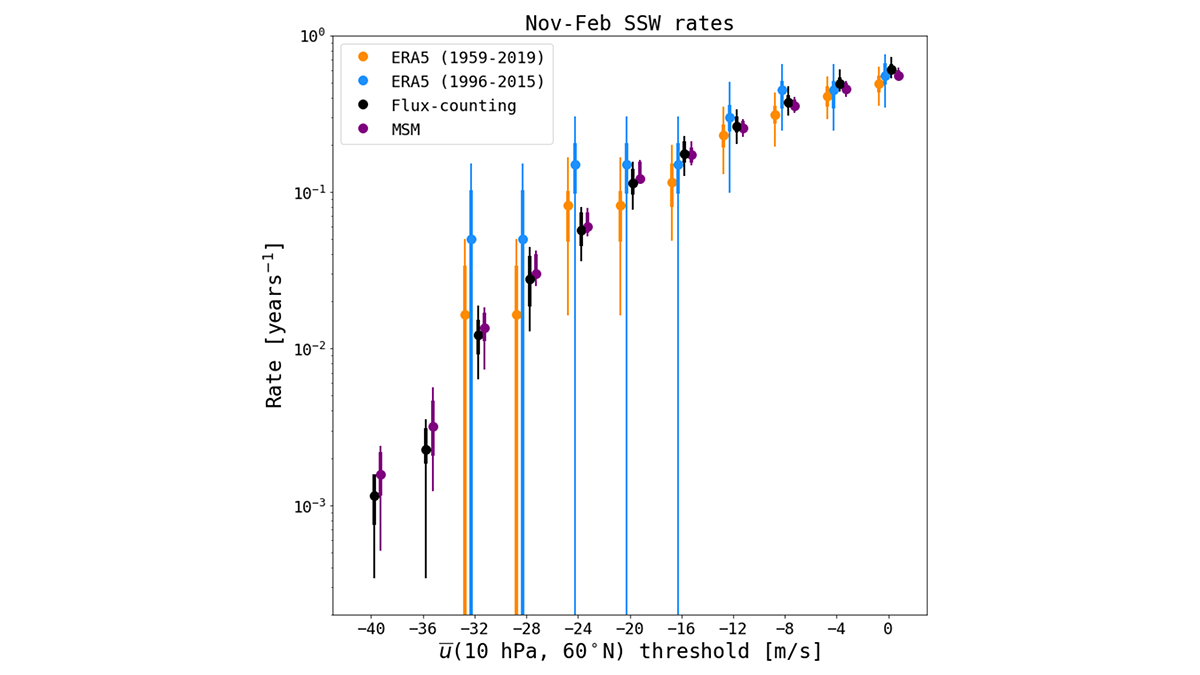Editors’ Highlights are summaries of recent papers by AGU’s journal editors.
Source: AGU Advances
Assessing the risk of extreme weather events is crucial for our society, but it is incredibly challenging due to their sporadic nature. Although high-resolution weather models are critical for accurately evaluating extreme events, they are typically run only on synoptic timescales. Therefore, long-term climatological risk assessments rely on centennial-scale integrations of cheaper low-resolution or statistical models.
However, Finkel et al. [2023] propose new statistical methods that utilize subseasonal weather forecast ensembles to extract once-in-500-year events, even with only 20 years of 46-day weather forecasts. The method is specifically applied to sudden stratospheric warming (SSW) events, which provide a source of surface weather predictability on the subseasonal-to-seasonal timescale. As a potential next step, one could seek to understand the impact of global warming on extremes by utilizing a high-resolution model in ensemble forecast mode, initialized around a decade at the end of this century, as provided by a climate model.
Citation: Finkel, J., Gerber, E. P., Abbot, D. S., & Weare, J. (2023). Revealing the statistics of extreme events hidden in short weather forecast data. AGU Advances, 4, e2023AV000881. https://doi.org/10.1029/2023AV000881
—Sarah Kang, Editor, AGU Advances

